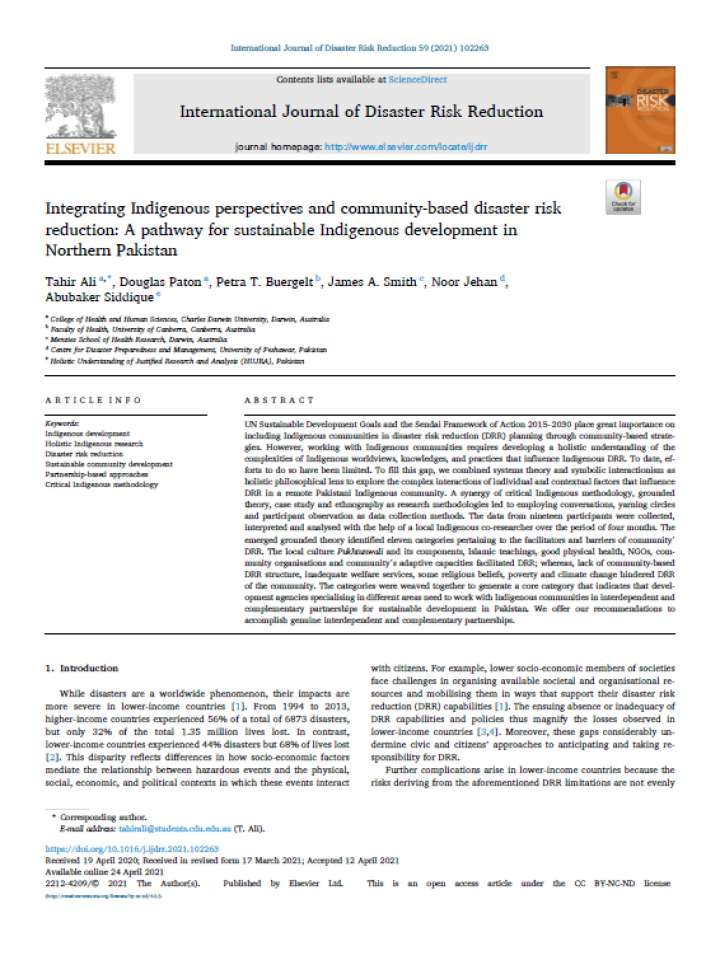Integrating Indigenous perspectives and community-based disaster risk reduction: A pathway for sustainable Indigenous development in Northern Pakistan
Highlights
- • There is a need to holistically understand influencing factors of DRR and complex interplay among them in Indigenous research.
- • Western research does not attend to societal factors that contribute to Indigenous disaster risk vulnerability and DRR.
- • Indigenous DRR processes is holistically identified which impact the disaster preparedness and broader community development.
- • The authors of this research study propose a two-way Indigenous CBDRR theory for intersectoral engagement to strengthen Indigenous DRR in Pakistan.
Abstract
UN Sustainable Development Goals and the Sendai Framework of Action 2015–2030 place great importance on including Indigenous communities in disaster risk reduction (DRR) planning through community-based strategies. However, working with Indigenous communities requires developing a holistic understanding of the complexities of Indigenous worldviews, knowledges, and practices that influence Indigenous DRR. To date, efforts to do so have been limited.
To fill this gap, the authors of the research study combined systems theory and symbolic interactionism as holistic philosophical lens to explore the complex interactions of individual and contextual factors that influence DRR in a remote Pakistani Indigenous community.
A synergy of critical Indigenous methodology, grounded theory, case study and ethnography as research methodologies led to employing conversations, yarning circles and participant observation as data collection methods. The data from nineteen participants were collected, interpreted and analysed with the help of a local Indigenous co-researcher over the period of four months. The emerged grounded theory identified eleven categories pertaining to the facilitators and barriers of community’ DRR. The local culture Pukhtunwali and its components, Islamic teachings, good physical health, NGOs, community organisations and community's adaptive capacities facilitated DRR; whereas, lack of community-based DRR structure, inadequate welfare services, some religious beliefs, poverty and climate change hindered DRR of the community.
The categories were weaved together to generate a core category that indicates that development agencies specialising in different areas need to work with Indigenous communities in interdependent and complementary partnerships for sustainable development in Pakistan. The authors offer their recommendations to accomplish genuine interdependent and complementary partnerships.
Explore further
